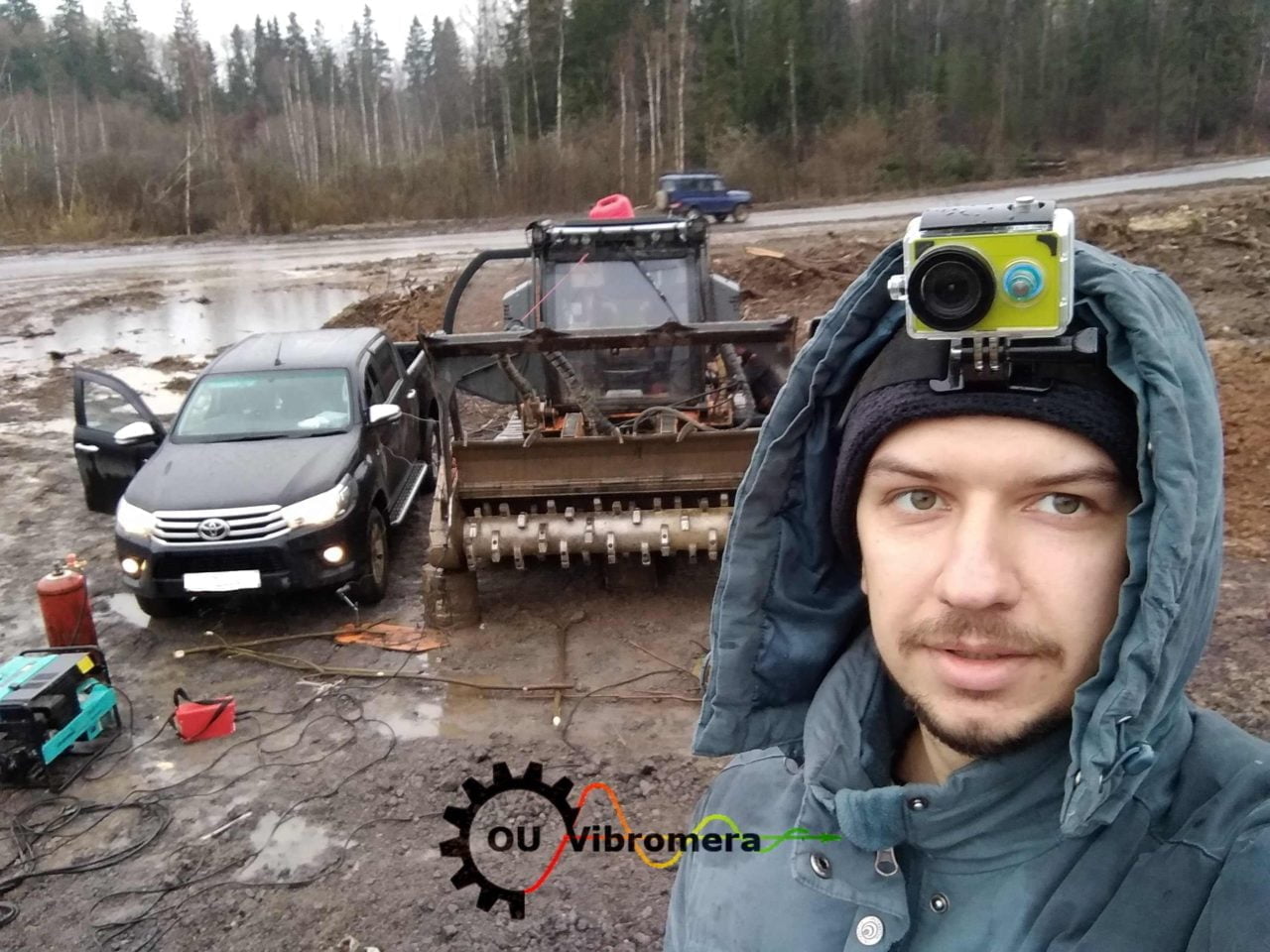Challenges of Mulcher Rotor Balancing in the Rain: Challenge Accepted!
Balancing the rotors of industrial machines outdoors is no easy task. And when nature throws an extra challenge in the form of pouring rain, it requires quick thinking and reliable tools. Recently, I had to balance a forest mulcher right during a heavy downpour. Thanks to the vibro-analyzer and the Balanset-1A balancer, it was possible not only to eliminate the imbalance but also to successfully adapt to the inclement weather conditions.
Not Just Balancing: The Challenge from the Pouring Rain
- - Safety Techniques: Wet equipment and wires pose a risk factor. It is necessary to exercise special caution and take additional safety measures.
- - Electronics Protection: Portable vibro-analyzers and laptops are sensitive to moisture. They must be reliably protected from water ingress.
- - Comfort of Work: Balancing a rotor is a procedure that requires precision. Working in the rain without proper protection is difficult and negatively impacts concentration.
Solution: Balanset-1A and a Flexible Approach
This time, for the balancing of the forest mulcher rotor, Balanset-1A was chosen. This portable tool has proven itself well in such tasks due to the following advantages:
- - Expandability: Balanset-1A comes with the option to order extended cables – up to 10 meters.
- - High Accuracy: Accurate sensors and calculation software allow for quick determination of the amount and location of corrective masses.
- - Ease of Operation: A user-friendly interface and clear instructions make the balancing process intuitively understandable.
Adaptation to Conditions
The extended cables of Balanset-1A provide special flexibility when working in difficult conditions:
- - Vibro-analyzer and computer – under protection: Balanset-1A was connected to the rotor, placing the device itself and the working laptop under the protection of a car cabin.
- - Dry hands and accurate measurements: Sheltered from the rain, I conducted all the measurements and balancing calculations.
- - Safe placement of weights: While the electronics remained under the canopy, the calibration (trial) weight and subsequent corrective masses were securely installed on the rotating parts in accordance with the Balanset-1A instructions.
Result: Restoring Smooth Operation
Despite the challenges posed by the weather, the forest mulcher rotor was successfully balanced. The vibration significantly decreased, ensuring smoother operation and less strain on components.
Benefits of Extended Cables of Balanset-1A
The ability to work with extended cables not only ensures comfort during balancing in adverse conditions but also opens up a range of possibilities:
- - Field Work: Extended cables allow for balancing rotors, shafts, and other equipment in locations remote from stationary power sources.
- - Complex Assemblies: The ability to place the computer and analyzer at a distance expands the possibilities for diagnosing hard-to-reach nodes and components.
- - Work in Confined Spaces: In a workshop or on a construction site, Balanset-1A with extended cables facilitates the balancing process in narrow or inconvenient spaces.
Conclusion
This story is not just another example of successful use of Balanset-1A, but also a reminder that in field conditions, weather, like unforeseen difficulties, should not become a significant obstacle. Proper tool use, a thoughtful approach, and a bit of inventiveness can help overcome even "wet" balancing challenges. Indeed, the prompt resolution of such problems ensures that industrial machines remain operational, thereby maintaining productivity and saving on costly downtime.
Learn more about the process in related articles: Mulcher Rotor Balancing Process and Balanset-1A Operation Manual.
